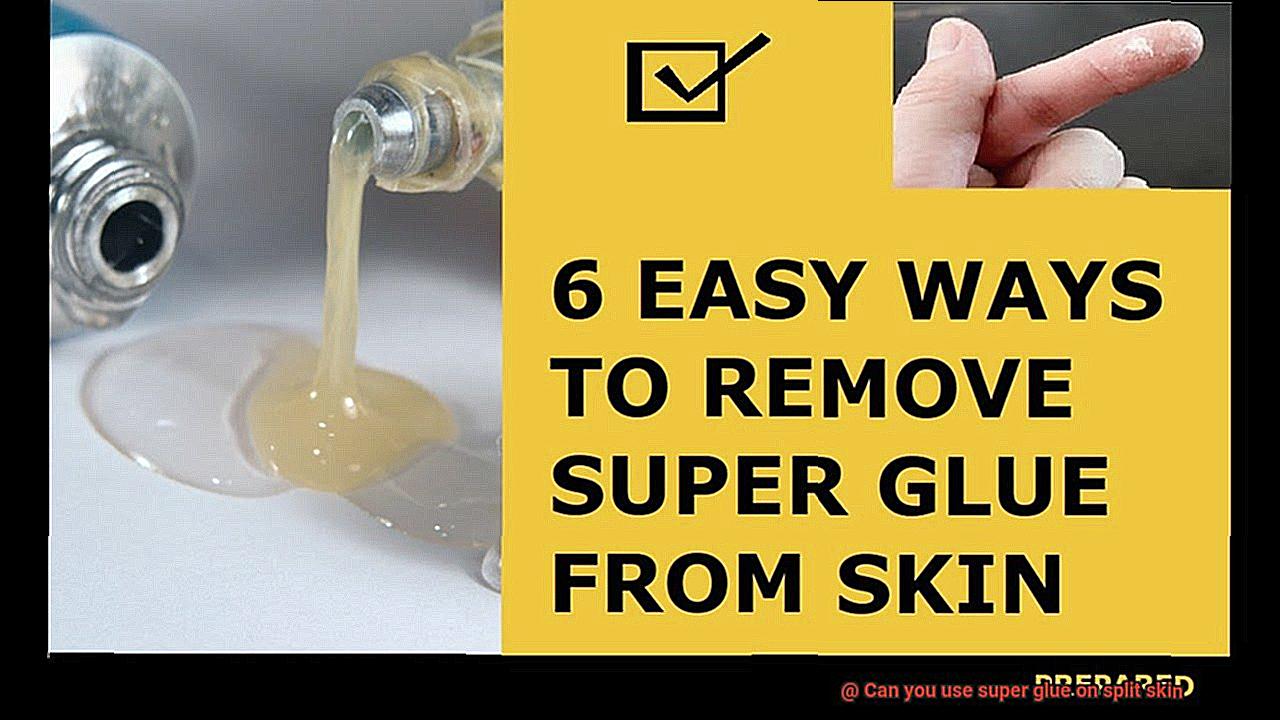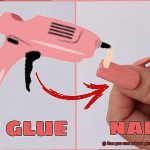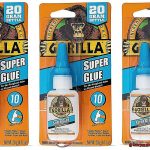We’ve all been there – a sudden slip of the knife while chopping veggies, a clumsy accident with a sharp object, and voila. You find yourself with an annoying split in your skin. Ouch. Now, you’re on the hunt for a quick and easy way to close that pesky wound. Enter super glue – the superhero of adhesives. But before you reach for that trusty tube, let’s dive into the debate about whether it’s safe to use super glue on split skin.
In this blog post, we’ll explore both sides of the story, uncovering the pros and cons of using super glue as a makeshift wound adhesive. We’ll also shed light on potential risks and safety concerns that might make you think twice before reaching for that sticky solution.
But hey, hold up. Before we get started, it’s important to remember that I’m not a doctor (unless WebMD counts). So, please consult a medical professional before attempting any DIY treatments for split skin or wounds. This blog post is here to provide general information and spark your curiosity – not replace expert advice.
Alright then, let’s dive into this sticky situation and find out if super glue is truly a hero or just another potential hazard when it comes to treating split skin.
What is Super Glue?
Contents
- 1 What is Super Glue?
- 2 Can You Use Super Glue on Split Skin?
- 3 Pros and Cons of Using Super Glue on Split Skin
- 4 Is It Safe to Use Super Glue on Split Skin?
- 5 Alternatives to Using Super Glue on Split Skin
- 6 How to Properly Care for a Cut or Wound
- 7 When to Seek Medical Attention for a Cut or Wound
- 8 Conclusion
Super glue, scientifically known as cyanoacrylate adhesive, is a revolutionary adhesive that has transformed the world of bonding. This fast-acting adhesive forms an incredibly strong bond when exposed to moisture. In this comprehensive article, we will explore the science behind super glue, its versatile applications, and the precautions to consider when using it.
The Science Behind Super Glue:
Super glue consists of a liquid monomer called cyanoacrylate. When this monomer encounters moisture, either from the air or the materials being bonded, it undergoes rapid polymerization. This process creates long chains of molecules that form an exceptionally strong bond capable of withstanding high temperatures, chemicals, and physical stress.

Versatile Applications:
One of the greatest strengths of super glue is its versatility. It can effectively bond a wide range of materials together, including plastics, metal, rubber, ceramics, and certain fabrics. Whether you need to repair a broken vase, fix a loose sole on your shoe, or mend a ceramic figurine, super glue is the go-to adhesive.
Household Repairs:
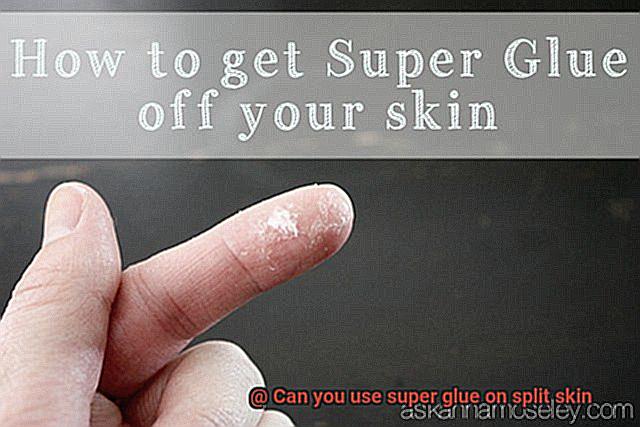
Super glue is an invaluable tool for quick fixes around the house. From reattaching broken handles to fixing jewelry or securing loose tiles, super glue provides a reliable solution. Its fast drying time allows you to complete repairs in no time.
Crafts and DIY Projects:
Craft enthusiasts and DIYers appreciate super glue for its precision and strength. Whether you’re creating intricate jewelry pieces or building models, super glue ensures your creations stay intact for years to come.
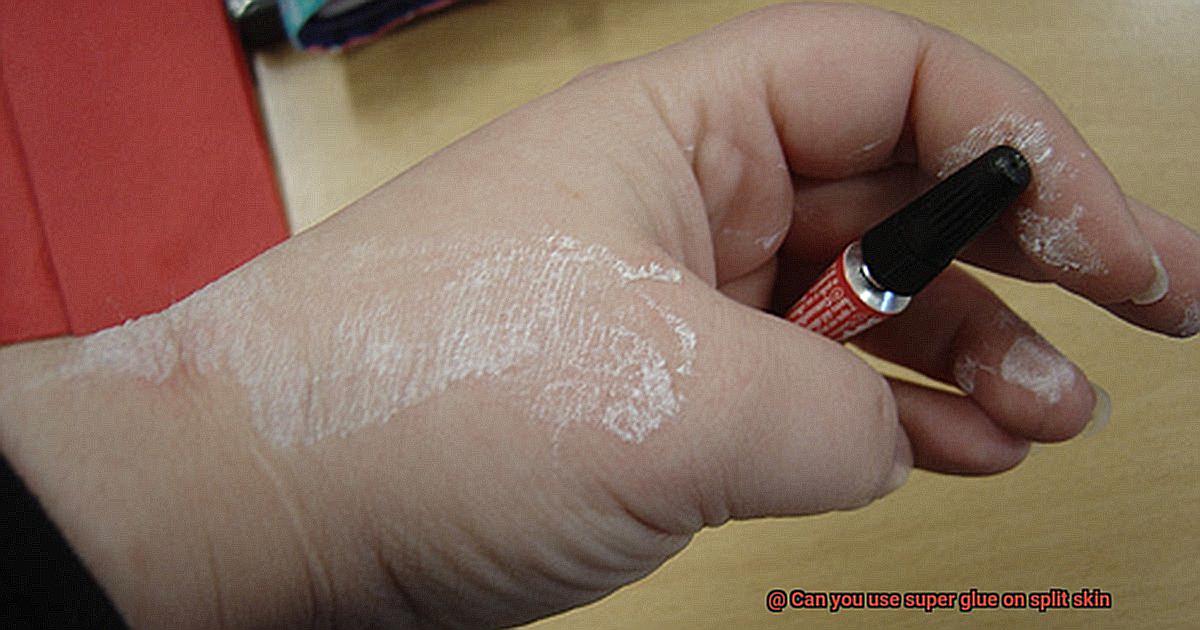
Industrial Applications:
Super glue finds extensive use in various industries due to its ability to securely bond different materials together. It is commonly employed in woodworking, electronics assembly, automotive manufacturing, and aerospace industries. Its quick-drying properties and exceptional strength make it an ideal adhesive for industrial applications.
Medical Uses:
Medical-grade super glues have gained popularity in the healthcare field. These specialized adhesives are designed for use in emergency rooms and clinics to close small wounds, cuts, or incisions. They provide a temporary closure until the wound can be properly treated by a medical professional.
Precautions:
While super glue is a powerful adhesive, caution must be exercised when using it. It should not be applied to deep, large, or infected wounds, as it can interfere with proper healing and increase the risk of infection. It is always advisable to seek medical attention for serious injuries and consult a healthcare professional before attempting any self-treatment with super glue.
Can You Use Super Glue on Split Skin?
We’ve all experienced that annoying split in the skin that seems too insignificant to bother a doctor with. In those moments, it can be tempting to reach for the trusty tube of super glue tucked away in your drawer. But before you take that leap, let’s explore whether using super glue on split skin is a safe and effective solution.
Why It’s Not Recommended:
- Super glue isn’t made for skin: Super glue, scientifically known as cyanoacrylate adhesive, was created to bond non-living objects. It wasn’t formulated with the intention of being used on the delicate surface of our skin.
- Potential skin irritation: Super glue contains chemicals that can irritate the skin, causing a burning sensation or even triggering allergic reactions in certain individuals. Applying it directly to split skin can exacerbate these risks.
- Interference with wound healing: When our skin splits, we need to allow the natural healing process to occur. Using super glue may seal the wound shut, potentially trapping harmful bacteria or pathogens inside and increasing the risk of infection.
- Difficulties for healthcare professionals: If a wound requires medical attention, using super glue can complicate matters for healthcare professionals trying to assess and clean the wound properly. This hindrance can impede their ability to provide appropriate treatment and care.
Safer Alternatives:
- Clean and cover: For minor cuts or split skin, thoroughly cleanse the wound with mild soap and water. Apply an antiseptic ointment and cover it with a sterile bandage. This routine usually suffices for healing.
- Seek medical help if needed: If the split in your skin is more severe or necessitates medical attention, it’s crucial to consult a healthcare provider. They possess the expertise to administer proper wound care and determine if additional treatment is necessary.
- Medical-grade adhesives: To secure wound closure, there are specific adhesives available that are designed for use on the skin. These medical-grade adhesives differ from super glue, being formulated specifically for safe skin contact. Healthcare professionals may use these adhesives if required.
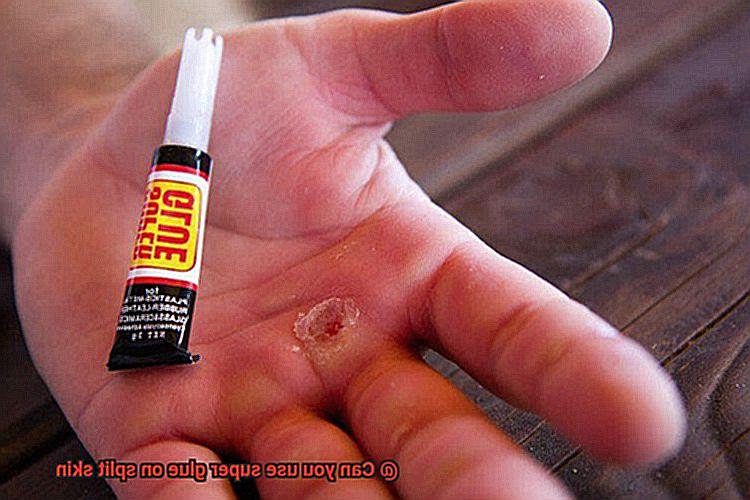
Pros and Cons of Using Super Glue on Split Skin
We’ve all experienced it – a small split or cut in our skin that demands immediate attention. In these moments, the thought of using super glue to quickly seal the wound may cross your mind. While it may seem like a convenient solution, it’s important to carefully consider the pros and cons before reaching for that trusty tube of adhesive. In this article, we’ll explore the advantages and disadvantages of using super glue on split skin, equipping you with valuable insights to make an informed decision.
The Pros:
Quick and Convenient:
Super glue is widely available and can be easily applied to split skin. It dries rapidly, forming a strong bond within minutes. This allows for a quick and efficient seal, providing immediate relief.
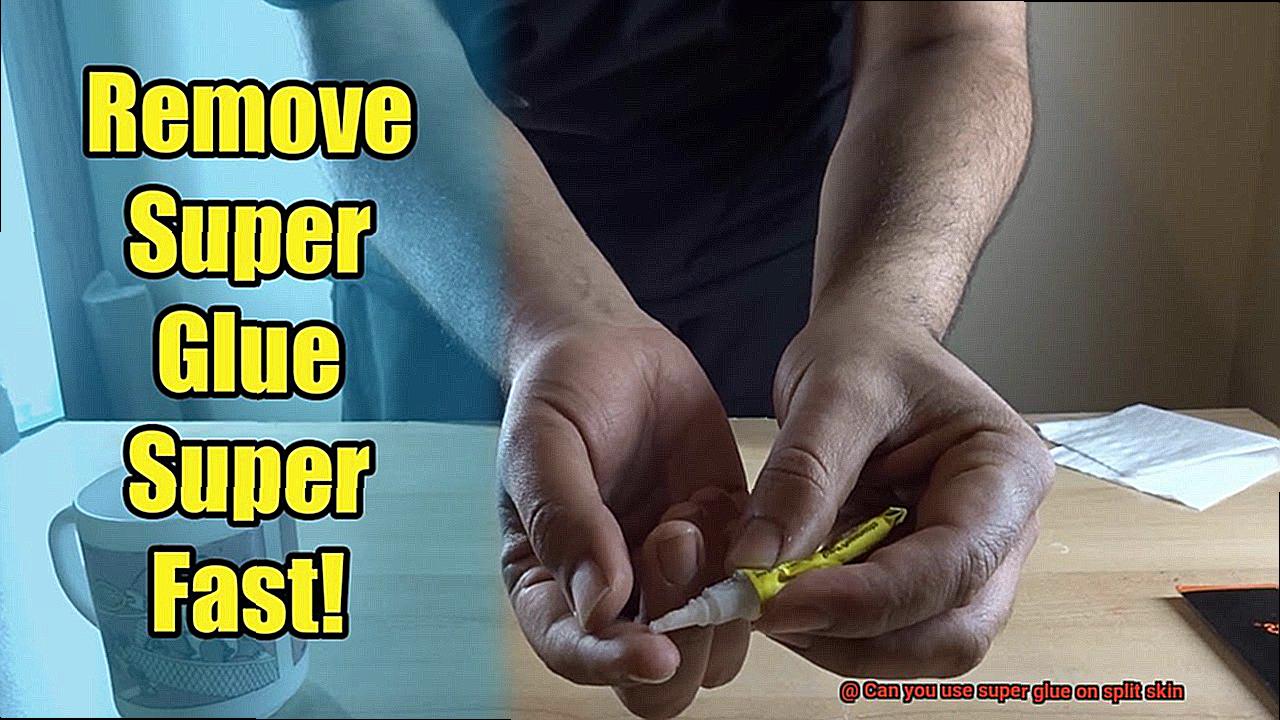
Cost-effective:
Compared to other medical adhesives or wound closure methods, super glue is relatively inexpensive. This makes it a practical choice for those on a budget or in emergency situations.
Water-resistant:
Once dry, super glue creates a waterproof barrier over the wound, shielding it from moisture and reducing the risk of infection. This is particularly advantageous for wounds located in areas prone to moisture exposure, such as the hands or feet.
Minimal Scarring:
When used correctly, super glue can provide a clean and neat closure to the wound, resulting in minimal scarring compared to traditional sutures or staples. This advantage is especially valuable for small cuts or lacerations that do not require extensive wound closure.
The Cons:
Toxicity Risks:
Super glue contains chemicals that can be toxic if ingested or applied to larger areas of skin. Improper usage can lead to skin irritation, allergic reactions, or even chemical burns. It’s essential to follow instructions carefully and avoid using super glue on deep wounds or large areas of broken skin.
Lack of Flexibility:
Unlike stitches or specialized medical adhesives, super glue lacks flexibility once it dries. This can cause discomfort or restrict movement in areas where the skin needs to stretch or bend, hindering proper healing.
Potential for Improper Wound Healing:
While super glue effectively closes the skin’s surface, it does not address underlying tissue damage or promote proper wound healing. In some cases, using super glue on split skin may delay healing or increase the risk of complications such as infection or scarring.
Limited Application:
Super glue is suitable for minor cuts and lacerations with clean, well-approximated edges. It is not recommended for wounds with jagged or uneven edges, deep puncture wounds, or those that require medical evaluation or intervention.
Is It Safe to Use Super Glue on Split Skin?
We’ve all been there – a split skin that just won’t heal. The temptation to reach for the super glue and seal that wound shut can be strong. After all, super glue is known for its incredible bonding power and quick-drying capabilities. But is it really safe to use super glue on split skin? Let’s dive into the research and find out.
First things first, it’s important to understand that using super glue on split skin is not recommended by medical professionals. While it may seem like a convenient solution, there are potential risks and complications associated with using super glue in this manner.

Potential Risks and Complications:
- Risk of infection: Super glue is not designed for use on living tissue and can create an environment where bacteria can thrive. This increases the risk of infection and delays the healing process.
- Irritation and allergic reactions: Super glue contains chemical compounds that may cause irritation or allergic reactions when applied to the skin. Some individuals may experience redness, swelling, or itching as a result.
- Lack of flexibility: Once super glue dries, it becomes rigid and inflexible. Our skin needs to move and stretch as it heals, but super glue restricts movement and hinders the natural healing process.
The Alternative:
Fear not. There are medical-grade adhesive products specifically formulated for use on the skin. These products are safe, non-toxic, and flexible, allowing for proper wound healing without the risk of complications. It’s always best to consult a healthcare professional for appropriate wound closure and treatment.
Alternatives to Using Super Glue on Split Skin
Dealing with split skin can be painful and inconvenient, but using super glue as a quick fix is not recommended due to potential complications. Luckily, there are safer alternatives available that can promote healing and protect the wound. This article will explore these alternatives in detail, providing you with the necessary information to make an informed decision.
Medical adhesive strips:
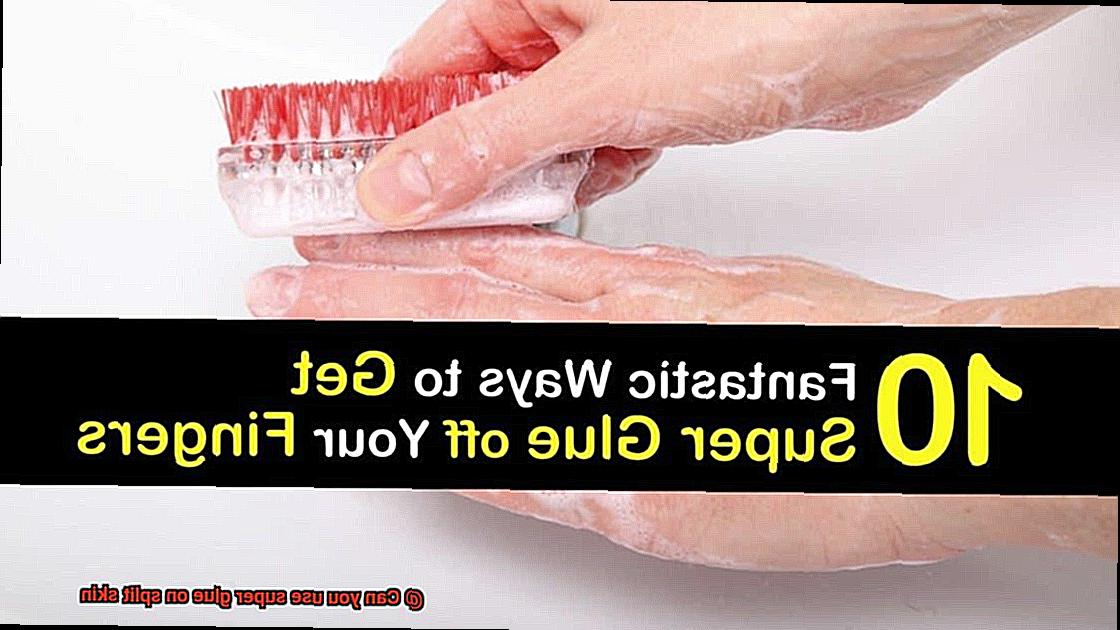
One popular alternative to super glue is medical adhesive strips, also known as butterfly closures or Steri-Strips. These small adhesive strips are applied across the split in the skin, effectively holding the edges together and promoting healing. Not only are they easy to use, but they also provide a barrier against dirt and bacteria, reducing the risk of infection.
Liquid bandage:
Another excellent alternative to super glue is a liquid bandage. This adhesive forms a protective layer over the split skin, sealing the wound and preventing infection. Conveniently available in most pharmacies, liquid bandages are highly effective in promoting healing.
Seeking medical attention:
For deeper or more severe splits, it may be necessary to seek medical attention. In such cases, medical professionals can assess the severity of the injury and determine the best course of action for optimal healing. Stitches or sutures may be required to close the wound properly and facilitate healing.
Proper wound care:
Regardless of the alternative method chosen, proper wound care is essential for optimal healing and prevention of infection. Regularly cleaning the area with mild soap and water, applying an antibiotic ointment, and covering it with a sterile bandage will help promote healing.
Topical creams or ointments:
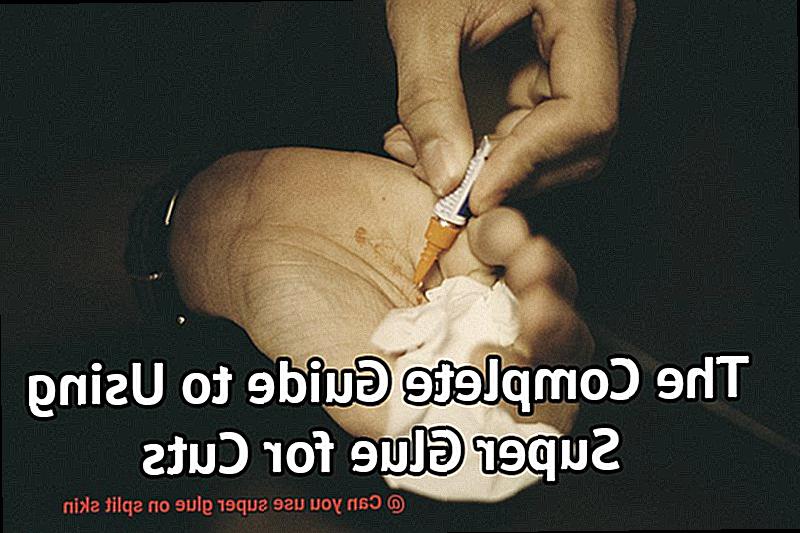
Over-the-counter topical creams or ointments containing ingredients like petroleum jelly or aloe vera can provide moisture and protection to the split skin. These products help soothe irritation and facilitate healing.
Avoid picking at scabs:
Resisting the temptation to pick at or peel any scabs that form over the split skin is crucial. Doing so can delay healing and increase the risk of infection. Allow the scabs to naturally fall off as the wound heals.
How to Properly Care for a Cut or Wound
Cuts and wounds are an inevitable part of life, and knowing how to properly care for them is crucial for quick healing and reducing the risk of infection. In this comprehensive guide, we will explore the essential steps to effectively treat a cut or wound. While some may consider using unconventional methods like super glue, it’s important to understand the risks involved and follow recommended wound care practices. Let’s dive in.
Step 1: Start by cleaning the wound
The first and most important step in caring for a cut or wound is to clean it thoroughly. Gently wash the area around the wound with mild soap and warm water, removing any dirt or debris that may be present. Harsh chemicals or antiseptics should be avoided, as they can damage the skin and delay healing. By cleaning the wound, you remove potential sources of infection and promote a healthy healing environment.
Step 2: Stop the bleeding
If the wound is bleeding, apply gentle pressure using a clean cloth or sterile gauze pad. Maintain this pressure for a few minutes until the bleeding subsides. Elevating the injured area above the heart, if possible, can also help reduce blood flow and minimize bleeding. This step is crucial to prevent excessive blood loss and promote clotting.
Step 3: Apply an antibiotic ointment
After cleaning the wound, apply a thin layer of antibiotic ointment to help prevent infection. This ointment acts as a protective barrier, creating an environment that discourages bacterial growth and promotes healing. However, it is important to note that super glue should not be used as an alternative to antibiotic ointment, as it is not designed for medical use.
Step 4: Cover the wound
To protect the wound from dirt, bacteria, and further injury, cover it with sterile gauze or a clean bandage. Ensure that the bandage is not wrapped too tightly, as it can restrict blood flow. Changing dressings regularly, at least once a day or whenever they become wet or dirty, is also crucial to maintain cleanliness and promote healing.
Step 5: Keep the wound moist
Contrary to popular belief, keeping the wound moist can actually speed up the healing process. Applying a thin layer of petroleum jelly or an over-the-counter hydrogel can help keep the wound moist and accelerate healing. This moisture supports the growth of new skin cells and prevents scabbing, which can delay healing. However, it is important to note that using super glue on the wound is not recommended, as it can hinder the natural healing process.
Step 6: Monitor for signs of infection
It is important to closely monitor the wound for any signs of infection. These may include increased redness, swelling, warmth around the wound, pus or discharge, or worsening pain. If you notice any of these symptoms, it is essential to seek medical attention promptly, as an infection can significantly delay healing and lead to complications.
When to Seek Medical Attention for a Cut or Wound
Cuts and wounds are a part of life, but knowing when to seek medical attention is crucial. In this guide, we will discuss the factors to consider when deciding whether to treat a cut or wound at home or seek professional care.
Assessing the Severity:
Before deciding on a course of action, it’s important to assess the severity of the injury. Small, shallow cuts can typically be treated at home with basic first aid. Clean the wound with mild soap and water to prevent infection, then apply an over-the-counter antiseptic ointment and cover with a sterile bandage.
When to Seek Medical Attention:
- Deep Cuts: If the cut is deeper than 1/2 inch or requires stitches, it’s best to seek medical attention. Deep cuts can damage underlying structures like nerves or tendons, requiring specialized care.
- Uncontrolled Bleeding: If direct pressure doesn’t stop bleeding within 10-15 minutes, see a healthcare professional. Persistent bleeding may indicate a serious underlying issue.
- Location Matters: Cuts on the face, hands, or genital area should be evaluated by a healthcare professional due to their high risk of infection and potential complications.
- Dirty or Rusty Objects: Cuts caused by dirty or rusty objects have a higher risk of infection and may require proper cleaning and assessment. Seeking medical attention is crucial in these cases.
- Signs of Infection: Redness, swelling, warmth, or pus drainage around the wound are signs of infection that require medical attention and treatment with antibiotics.
- Concerning Symptoms: Any concerns about wound healing or associated symptoms like numbness, tingling, or difficulty moving nearby joints should prompt you to seek medical attention for further evaluation. These symptoms may indicate nerve or tendon damage that needs specialized care.
NGEYRpJTR5Q” >
Also Read: Is Glue Bad For Your Skin?
Conclusion
Using super glue on split skin is a topic that sparks curiosity and concern. Many people wonder if this common household adhesive can be used as a quick fix for small cuts or wounds. While it may seem tempting to reach for the super glue in moments of desperation, it is important to approach this remedy with caution.
Super glue, also known as cyanoacrylate adhesive, is designed to bond quickly and strongly to various materials. Its primary purpose is not for medical use but rather for fixing broken objects or securing surfaces together. However, due to its strong adhesive properties, some individuals have experimented with using it on split skin.
It is crucial to understand that super glue is not intended for use on the human body. The skin is a delicate organ that requires proper care and treatment when injured. Applying super glue directly onto split skin can lead to several potential issues.
Firstly, super glue contains chemicals that can cause irritation and allergic reactions when in contact with the skin. This can result in redness, swelling, itching, or even more severe symptoms in some cases. Additionally, applying super glue onto an open wound can trap bacteria inside and hinder the natural healing process.
Furthermore, using super glue on split skin may impede healthcare professionals from properly assessing and treating the injury if necessary. It can make it difficult to clean the wound thoroughly or apply appropriate medical interventions.
Instead of relying on makeshift solutions like super glue, it is recommended to seek professional medical advice for any cuts or wounds. Healthcare providers are equipped with the knowledge and tools necessary to assess and treat injuries effectively.
In conclusion, while it may be tempting to use super glue on split skin as a quick fix, it is not advisable due to potential risks and complications.

